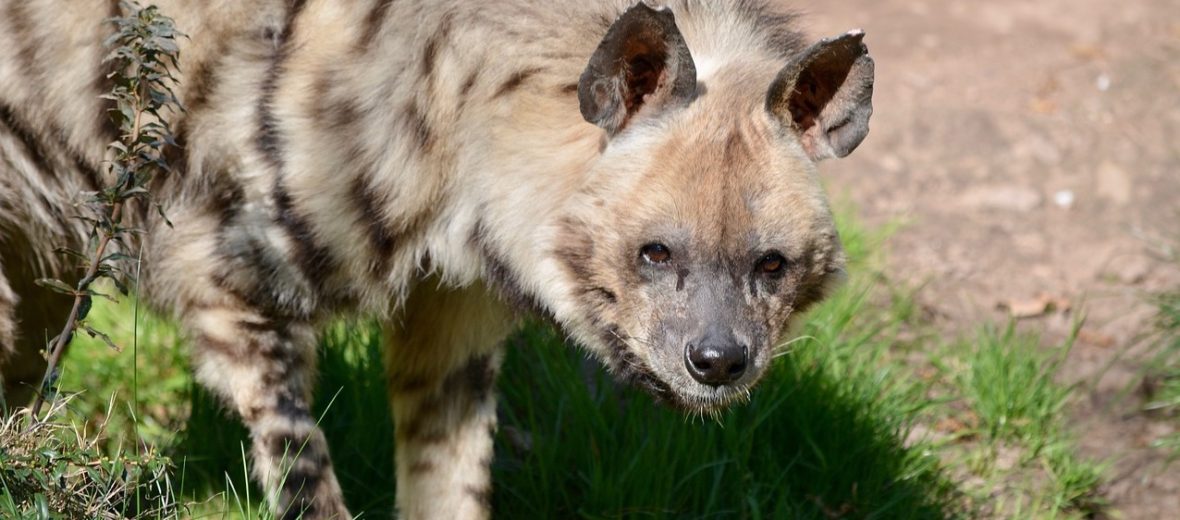
The striped hyena can be found, in spotty patches, from northern and eastern Africa, to Central Asia, into the Middle East, the Indian subcontinent, and also the Caucasus. These critters are often called the scourge of the Serengeti, but as scavengers they provide a very important cleanup service. Due to habitat destruction at the hands of residential & commercial development, and agriculture; hunting; trapping; and land division at the hands of roads; plus vehicle strike (being hit by vehicles), these cool critters are listed as Near Threatened by the IUCN. Their numbers of less than 10,000 are decreasing all the time.
First the Stats…
Scientific name: Hyaena hyaena
Weight: Up to 120 lbs.
Length: Up to 4.3 feet, plus up to a 16 inch tail
Height: Up to 31 inches, at the shoulders
Lifespan: Up to 20+ years
Now on to the Facts!
1.) Thought initially to be solitary, it was later discovered that these hyenas dwell in small groups called cackles or clans.
2.) Hyenas are typically nocturnal (active at night). They only come out during the day on darker, stormy days.
3.) They utilize dense vegetation or larger caves for resting.
4.) While typically quiet, they will growl, roar, or screech loudly, if threatened.
5.) When threatened, they will usually raise their manes high to give the illusion of being larger than they actually are.
But wait, there’s more on the striped hyena!
6.) Territories are marked with urine or via scent marking.
7.) They usually avoid hunting in favor of picking up scraps of various kills, such as the carrion (dead animals) of gazelles, impalas, wildebeests, and zebras, to name a few.
Did you know…?
Striped hyenas jaws are powerful enough to crush bones, hooves, horns and teeth. The bite force of an adult hyena can measure up to 800 lbs. per square inch! That is strong enough to crush a femur, the largest bone in the body.
8.) When they do hunt, they usually go for smaller prey, like mice, rats, hares, reptiles, and birds.
9.) Younger females that haven’t reproduced yet or haven’t found their own home range will often help with the raising of their mother’s and sisters’ cubs.
10.) These hyenas are monogamous (mate for life).
But wait, there’s still more on the striped hyena!
11.) Females undergo up to a 90 day gestation (pregnancy) that yields up to 4 cubs.
12.) Weaning can take up 12 months.
Did you know…?
Their heart is 2x as large as that of the same-sized mammals.
13.) Lebanon’s national animal is the striped hyena.
14.) Adult females are typically dominant over the males and usually aggressive to other females.
15.) Hyenas are not members of the dog family, even though they may look a little like dogs.
But wait, there’s still a little more on the striped hyena!
16.) Believe it or not, the meerkat and the mongoose are the hyena’s closest relatives.
17.) The acid in their stomachs is strong enough to digest bones.
18.) Most hyenas carry the antibodies for rabies. So, their chances of death from the disease are extremely rare, if not impossible.
Now a Short Striped Hyena Video!
Be sure to share & comment below! Also, check out the Critter Science YouTube channel. Videos added regularly!
Want to suggest a critter for me to write about? Let me know here.



